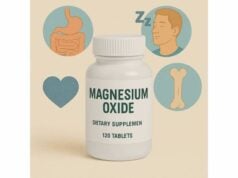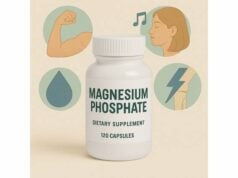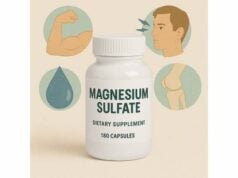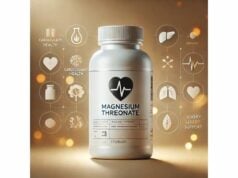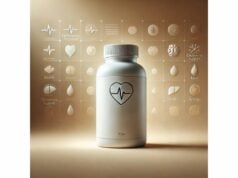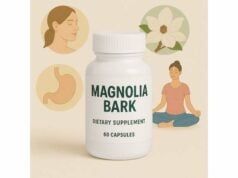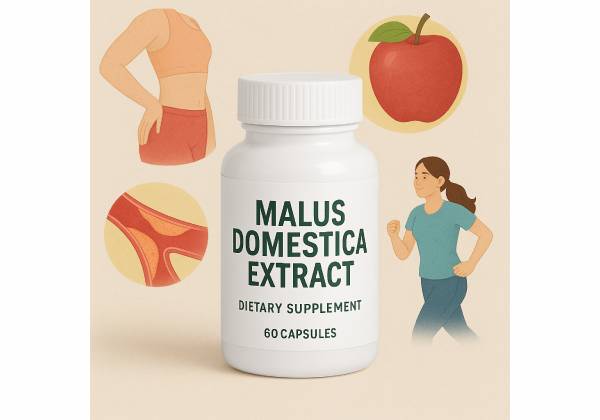
Malus domestica extract—often labeled as apple polyphenol extract or apple peel extract—concentrates the bioactive compounds that make apples a staple of heart-smart, skin-supportive nutrition. Chief among these are procyanidins, phloridzin (a natural cousin to modern SGLT2 inhibitors), quercetin glycosides, and chlorogenic acids. Together, they act on oxidative stress, endothelial function, gut–metabolic signaling, and skin photoprotection. Human trials suggest targeted benefits for UV-induced pigmentation and modest support for lipid markers in select groups, though results vary by dose, duration, and standardization. In practice, most supplements deliver 50–80% polyphenols, with procyanidins as the lead actives. This guide brings the evidence into focus so you can decide whether an apple extract belongs in your routine, how to take it, and when to be cautious. You will find real-world tips on choosing a product, practical dosing ranges, common mistakes to avoid, and a balanced look at what research does—and does not—yet show.
Key Facts
- May reduce UV-induced skin pigmentation after 12 weeks; benefits strongest with procyanidin-rich formulas.
- Can modestly improve lipid markers in certain people; effects are inconsistent across studies.
- Common daily dose: 300–600 mg standardized extract (≥50–70% polyphenols), usually with meals.
- Safety caveat: separate from medications whose absorption is sensitive to fruit polyphenols; certain drugs interact with apple juice.
- Avoid or seek medical advice if you have an apple allergy, birch pollen cross-reactivity, are pregnant, or take OATP-substrate drugs.
Table of Contents
- What is Malus domestica extract and how does it work?
- Proven benefits: what do studies show?
- How to use it: dosing and forms that make sense
- Real-world variables that change results
- Safety, interactions, and who should avoid it
- Evidence check: what remains uncertain
What is Malus domestica extract and how does it work?
Apple extract is a concentrated preparation from Malus domestica, typically standardized for polyphenols—especially oligomeric procyanidins (OPCs)—and related flavonoids and phenolic acids. Many products derive from unripe apples or apple peels because these parts contain higher levels of procyanidins and quercetin glycosides than the flesh. On labels, you may see “apple polyphenol extract,” “apple peel extract,” or branded ingredients produced from unripe fruit. Good formulas disclose total polyphenols and, ideally, a procyanidin content.
Key bioactives and what they do
- Procyanidins (catechin and epicatechin oligomers): The best-studied fraction for vascular and skin effects. They modulate nitric oxide signaling, counter oxidative stress, and may influence fat metabolism through mitochondrial and adipose pathways.
- Phloridzin (dihydrochalcone) and phloretin: Historically important because phloridzin inspired the development of modern SGLT2 inhibitors. In supplements, phloridzin’s oral bioavailability is limited, but it contributes to the extract’s overall metabolic profile.
- Quercetin glycosides and chlorogenic acids: Antioxidant and anti-inflammatory activity with supportive roles in endothelial function and glycemic dynamics.
- Ursolic acid (in peels): A triterpene connected to muscle and metabolic pathways, present in varying amounts depending on extraction.
Mechanisms in plain language
- Oxidative stress and inflammation: Apple polyphenols donate electrons to neutralize free radicals and upregulate the body’s own antioxidant systems, helping protect cell membranes, proteins, and DNA from UV light and everyday metabolic stressors.
- Vascular support: In some models, procyanidins enhance endothelial nitric oxide, which supports flexible blood vessels. Human trials specific to apple extract show mixed results—context matters, and whole-food apples may deliver fiber and other cofactors that extracts lack.
- Metabolic signaling: Animal and mechanistic studies suggest effects on lipid handling, pancreatic lipase activity, and adipocyte biology. Human data point to small improvements in cholesterol subgroups and visceral fat area under certain conditions.
- Skin photoprotection: Procyanidin-rich extracts can blunt the cascade of oxidative signals that increase melanin synthesis after UV exposure, translating to measurable changes in pigmentation in controlled settings.
What it is not
Apple extract is not the same as apple cider vinegar, apple pectin, or fresh apples. Those products can have distinct mechanisms and clinical effects. Extracts concentrate polyphenols; vinegar delivers acetic acid; pectin delivers soluble fiber. Each fits different goals.
Bottom line: Apple extract is a polyphenol-dense concentrate with plausible antioxidant, vascular, skin, and metabolic actions. Its strongest, most consistent human signal to date is in UV-related skin pigmentation, while cardiometabolic outcomes show modest or context-dependent effects.
Proven benefits: what do studies show?
Skin photoprotection and pigmentation
A randomized, double-blind trial in healthy women tested 12 weeks of 300 or 600 mg per day of a procyanidin-rich apple extract and found protection against UV-induced pigmentation compared to placebo. The key outcomes—erythema change, melanin change from baseline, and preservation of skin lightness—were most evident after deliberate UV exposure to a small skin area. While dose-dependence was not linear, the direction favored the extract. For people seeking internal, daily support alongside sunscreen and topical routines, this is the clearest benefit signal for Malus domestica extract so far.
Cholesterol and vascular markers
A rigorous meta-analysis pooling randomized controlled trials on apples and apple-derived products (including extracts) reported small, placebo-adjusted reductions in total and LDL cholesterol, especially in participants with higher baseline cholesterol. Importantly, other outcomes like triglycerides, glucose, insulin, C-reactive protein, and blood pressure were largely unchanged in the pooled analysis, and HDL showed a small reduction. These nuances matter: while some single studies show endothelial or lipid improvements, the aggregate effect is modest and not universal.
Visceral fat and body composition
A 12-week beverage trial delivering 600 mg/day of apple polyphenols found reductions in visceral fat area on CT in people with higher starting visceral adiposity, with changes appearing by week eight and consolidating by week twelve. Not all trials replicate body weight changes, suggesting any body-composition effect is regional and modest, not a general weight-loss guarantee.
Glucose dynamics and appetite
Post-prandial glucose and insulin effects from apple constituents are mixed across products (whole apples, pectin, vinegar, extracts). Phloridzin’s pharmacology links conceptually to glucose transport, but intact phloridzin in oral extracts has limited bioavailability. In practice, apple extract alone should not be expected to meaningfully lower fasting glucose in most users without other diet or lifestyle changes.
Oral and skin adjuncts
Beyond UV pigmentation, antioxidant and anti-glycation properties suggest theoretical benefits for photoaging pathways. Early mechanistic work and small trials in related polyphenol sources (like maritime pine) support plausibility, but direct, replicated cosmetic outcomes beyond UV models remain limited for apple extract specifically.
What this means for you
- Choose apple extract primarily for skin photoprotection support and as a small adjunct for lipid management when combined with diet and exercise.
- Do not expect robust changes in blood pressure, fasting glucose, or weight from extract alone.
- If your LDL is elevated, a standardized extract may contribute to a few mg/dL of additional improvement over weeks to months, but lifestyle and statin decisions remain between you and your clinician.
Takeaway: The totality of human evidence favors skin photoprotection and small lipid benefits in selected individuals, with variable effects elsewhere. Set realistic expectations and measure what matters (for example, lipid panels at 8–12 weeks).
How to use it: dosing and forms that make sense
Standardization matters
Look for labels that state total polyphenols (for example, ≥50–70%) and specify procyanidins (often 20–60% of the extract). Products derived from unripe apples or peels typically yield richer procyanidin profiles. When in doubt, select a brand that provides a certificate of analysis and third-party testing for purity.
Effective dose ranges from human trials
- 300–600 mg/day of standardized apple polyphenol extract, split once or twice daily with meals, is the most studied range for skin and visceral fat area outcomes across 8–12 weeks.
- For lipid support, the same 300–600 mg/day range is reasonable as an adjunct to diet changes. Expect small effects and check a lipid panel after 8–12 weeks to assess personal response.
How to time doses
- Take with food to reduce the chance of stomach upset and to mirror how polyphenols are naturally consumed.
- If you use medications known to have fruit-juice interactions (see the safety section), separate dosing by at least 4 hours and speak with your clinician or pharmacist.
Stacking and companions
- With sunscreen and a retinoid: For photoprotection, an inside-out plus outside-in strategy makes sense. Supplements are not a substitute for SPF.
- With soluble fiber (pectin) and plant sterols: For LDL support, combining lifestyle, fiber, and sterols often yields more measurable changes than any single supplement.
- With vitamin C: Many polyphenols recycle antioxidant networks; typical 250–500 mg/day vitamin C can be a sensible pairing unless otherwise directed by a clinician.
Forms you will see
- Capsules/tablets: Most common; look for dosage clarity (mg of extract, not just mg per serving).
- Beverages/powders: Ensure the label specifies actual polyphenol content per serving; flavored waters with apple imagery may not provide meaningful doses.
- Topicals with “apple stem cell” claims: These are cosmetic products with very different ingredients and do not replicate the oral evidence summarized here.
Use duration and cycling
Plan an 8–12 week trial to gauge response. If you are targeting lipid markers, retest labs; if photoprotection is the goal, track skin outcomes seasonally and continue the basics (SPF, shade, protective clothing). Many users maintain a lower daily dose during sunny months and pause in winter if desired.
Quality checklist (quick scan)
- Standardized polyphenols and procyanidins listed
- Third-party tested for contaminants and actives
- Transparent origin (peel or unripe apple)
- Reasonable excipient profile, allergen disclosure, and drug-interaction caution on label
Bottom line: Start at 300 mg/day with meals; increase to 600 mg/day if well tolerated and if your goal is skin photoprotection or visceral-fat-area support. Evaluate at 8–12 weeks, keep expectations realistic, and prioritize product quality.
Real-world variables that change results
1) Polyphenol profile, not just total milligrams
Two 500 mg products can behave differently if one is rich in shorter procyanidin oligomers (which are more bioavailable) and the other skews to larger polymers. Ratios of monomers, dimers, and trimers influence absorption and downstream metabolites formed by your gut microbiome.
2) Source material and processing
Unripe fruit and peel-heavy extracts typically concentrate the target compounds. Solvent systems, temperature, and stabilization steps (for example, nitrogen blanketing) can preserve—or degrade—sensitive phenolics. Reputable suppliers specify extraction methods and stability testing.
3) Your baseline status
People with higher starting LDL often show larger absolute reductions. Those with higher visceral fat may show clearer CT-based changes at 12 weeks than lean individuals. If your baseline risk is low, changes may be too small to notice outside of the laboratory.
4) Diet context and the “whole-food effect”
Whole apples deliver soluble fiber, minerals, and a structural matrix that slow absorption and shape microbial metabolism. Extracts are fiber-free and place a different load on transporters and enzymes. This can explain why some whole-apple trials find improvements that isolated extracts alone do not consistently reproduce.
5) Microbiome differences
Procyanidins reaching the colon are transformed into smaller phenolic acids by gut microbes. Your microbial community dictates which metabolites you make and how much. Two people on the same dose can generate different metabolite fingerprints—and thus different clinical responses.
6) Sun exposure and skin type
For photoprotection, your Fitzpatrick skin type, total UV exposure, and sunscreen habits change outcomes. Trials often use standardized UV challenges; real life is messier. Treat apple extract as a supportive layer, not a shield.
7) Medication timing
If you take drugs whose absorption is sensitive to OATP transporters (examples include aliskiren and fexofenadine), timing around fruit juices matters. Although clinical interaction data are with juices, cautious spacing from polyphenol-dense extracts is prudent until you review with a clinician.
8) Expectations and measurement
“Feeling” antioxidant effects is unlikely. Instead, tie your goal to a measurable marker: lipid panels at 8–12 weeks, or standardized photos and UV-season diaries for skin. Without measurements, small gains are easy to miss—or to over-interpret.
Practical example
If your LDL is 165 mg/dL and you are already optimizing diet, adding a 600 mg/day procyanidin-rich apple extract for 12 weeks might produce a single-digit mg/dL reduction. That is meaningful as part of a stacked approach, but not a replacement for statin therapy if your clinician recommends it based on overall risk.
Bottom line: Outcomes depend on the extract’s composition, your baseline risk, your microbiome, and how you integrate the supplement into a broader plan. Control what you can—product quality, dose, timing, sun behavior, and lab follow-up.
Safety, interactions, and who should avoid it
General tolerability
Standardized apple extracts are typically well tolerated at 300–600 mg/day. The most common complaints are mild gastrointestinal symptoms (nausea, bloating) that usually improve when taken with food or at a lower starting dose. Headache is uncommon but reported anecdotally.
Allergy and oral allergy syndrome
If you have a known apple allergy or birch pollen–related oral allergy syndrome, avoid apple extract or use it only under medical supervision. Although processing changes proteins, cross-reactivity can still trigger symptoms.
Medication considerations
- OATP-substrate drugs: Apple juice can markedly reduce absorption of certain medications (for example, aliskiren and fexofenadine) via OATP2B1 and related transporters in the intestine. While those studies tested juice—not extract—err on the side of caution: separate doses by at least four hours and consult your pharmacist.
- Antidiabetic therapy: The dihydrochalcone phloridzin is the natural template for modern SGLT2 inhibitors. Apple extract is not an SGLT2 drug, and typical supplement doses do not reproduce prescription-level effects, but if you are on SGLT2 inhibitors, GLP-1 agonists, insulin, or sulfonylureas, add new supplements only with clinician oversight.
- Anticoagulants and antiplatelets: No direct contraindication is established, but many polyphenol-rich supplements carry a precaution. If you use warfarin, DOACs, or dual antiplatelet therapy, review any supplement changes with your care team.
Pregnancy, lactation, and pediatrics
There is insufficient safety data for concentrated apple extracts in pregnancy or while breastfeeding. Whole-food apples are generally safe as part of a balanced diet; concentrated extracts should be avoided unless your clinician agrees. Supplement use in children should be clinician-directed.
Surgery and medical procedures
As with most botanical supplements, stop 1–2 weeks before elective surgery to minimize unforeseen interactions.
Quality and contamination
Choose brands with third-party testing to reduce risks from pesticides, heavy metals, or adulterants. Avoid products that hide behind proprietary blends without disclosing polyphenol standardization.
When to stop
Discontinue and seek care if you notice rash, hives, swelling of lips or tongue, wheezing, severe GI distress, black or tarry stools, or lightheadedness suggestive of hypotension or hypoglycemia.
Bottom line: Apple extract is generally safe for healthy adults at commonly used doses. The standout caution is drug absorption interactions observed with apple juice; until individualized advice is obtained, space doses from sensitive medications and involve your clinician.
Evidence check: what remains uncertain
Dose–response and best standardization
Trials use different extract chemistries: some specify total polyphenols and detailed procyanidin distributions; others do not. We need head-to-head studies comparing 300 vs 600 vs 900 mg/day, matched for procyanidin chain length, to map dose–response more clearly.
Durability and maintenance
Most trials run 8–12 weeks. It is unclear how long benefits persist after stopping, or whether lower “maintenance” doses sustain gains for skin or lipids.
Cardiometabolic breadth
Meta-analytic findings suggest modest LDL reductions and little impact elsewhere. It remains to be seen whether specific subgroups—such as those with metabolic syndrome, low flavanol intake, or defined microbiome signatures—experience larger, clinically relevant changes.
Skin outcomes beyond UV models
The strongest skin evidence is for UV-induced pigmentation in controlled conditions. Whether daily supplementation alters real-world photoaging endpoints (wrinkle depth, elastin integrity) or supports recovery after procedures requires longer, cosmetically focused RCTs.
Interactions beyond juices
The transporter story (OATP2B1 and related) is clear with fruit juices, less so with encapsulated extracts. Until dedicated interaction trials are published, conservative spacing from sensitive drugs is wise.
Research-informed expectations
- If your goal is UV resilience, an 8–12 week course at 300–600 mg/day is evidence-aligned.
- If your goal is LDL, anticipate small additive changes and pair the extract with diet, fiber, and activity.
- If your goal is weight loss, the data do not support meaningful scale changes from apple extract alone.
Bottom line: Apple extract’s clinical sweet spots today are skin photoprotection and modest lipid support in selected individuals. The rest is promising but not definitive—choose it as a supporting player, not a standalone solution.
References
- Administration of Apple Polyphenol Supplements for Skin Conditions in Healthy Women: A Randomized, Double-Blind, Placebo-Controlled Clinical Trial 2020 (RCT)
- Metabolic and Cardiovascular Benefits of Apple and Apple-Derived Products: A Systematic Review and Meta-Analysis of Randomized Controlled Trials 2022 (Systematic Review)
- Lack of acute or chronic effects of epicatechin-rich and procyanidin-rich apple extracts on blood pressure and cardiometabolic biomarkers in adults with moderately elevated blood pressure: a randomized, placebo-controlled crossover trial 2018 (RCT)
- Evaluation of Safety of Excessive Intake and Efficacy of Long-term Intake of Beverages Containing Apple Polyphenols 2010 (RCT)
- Orange and apple juice greatly reduce the plasma concentrations of the OATP2B1 substrate aliskiren 2011 (Interaction Study)
Disclaimer
This article is for educational purposes only and is not a substitute for personalized medical advice, diagnosis, or treatment. Always talk with your healthcare professional before starting any new supplement, especially if you are pregnant or breastfeeding, have a medical condition, or take prescription medications. Never disregard professional advice because of something you read here.
If you found this helpful, feel free to share it with friends on Facebook, X (formerly Twitter), or your favorite platform, and consider following us for future updates. Your support helps us continue creating careful, useful guides.

